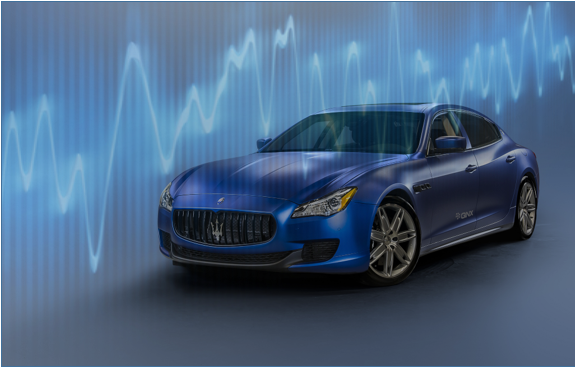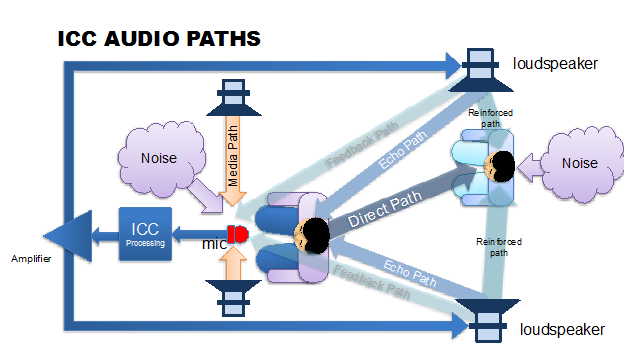If you’ve ever had to “twist and shout” to be heard by backseat passengers – or tried to build a car that solves the backseat dead zone problem, then listen up – you might find some new technology from QNX useful (and safer!).
 Originally posted by Len Layton on the QNX Auto Blog
Originally posted by Len Layton on the QNX Auto Blog
So many cars already have the basic hardware that we can leverage to effectively make a “phone call” to the people in the back of the vehicle. The car’s hands-free microphone can pick up the driver’s voice, amplify (reinforce) it, and play it out of the rear loudspeakers near the people in the back. This is the principle of in-car communications — ICC for short.
Designing a practical ICC system can be broken down into a few basic steps. But first let’s look at how a car’s hardware is set up and the paths where audio flows. The main problem is the “front-to-back” case where the driver’s voice needs to be reinforced for the benefit of the passengers in the back so that the driver doesn’t have to twist around and shout at the people in the back.
 From this diagram, you can see that we have essentially built a public address system for the car.
From this diagram, you can see that we have essentially built a public address system for the car.
In noisy driving conditions, the ICC system can make the driver’s voice heard much more clearly. Sound can flow through the reinforced path shown on the diagram. At intermediate noise levels, the listener in the back can hear both the direct path and the reinforced path at the same time.
If there is too much time delay between these two paths, then the listener will perceive the reinforced signal as a second voice and it will not sound natural at all. Studies have suggested that about 30 milliseconds is the acceptable limit of a delay between direct and reinforced paths.
Also, if there’s too much delay, some of the reinforced signal will come back to the talker in the form of echo, which can be disturbing or annoying. And let’s not forget the key issue we are dealing with – NOISE! Noise is all around the occupants, and the faster you go, the more noise there is. So, what should we care about when designing an ICC system?
The Solution Checklist:
QNX ICC is the first practical seat-to-seat, speech-enhancement software product. It addresses the whole set of challenges faced when implementing a practical ICC system in the following ways:
- Improves intelligibility by reinforcing speech naturally without distortion or added noise. QNX ICC addresses the primary goal of an ICC system – replacing the “What?” with “Oh yeah!”
- Automatically and continuously adapts the amount of reinforcement to the car’s actual noise level. So, as different noise conditions are experienced, the reinforcement is immediately and smoothly adjusted, and the driver does not need to operate any controls at all. QNX ICC is truly “set and forget” – it can safely be left enabled so that it is ready to kick-in as needed.
- No feedback or howling, as under no circumstances will QNX ICC ever howl or produce feedback.
- No echo or unpleasant perceptible effects because QNX ICC operates at low delay. The talker will only perceive that their voice is slightly louder, not delayed or “processed.”
- Low-delay operation so that reinforced speech does not perceptibly interfere with direct, non-reinforced speech. QNX ICC’s algorithmic latency is only 5 milliseconds.
- Only reinforces speech and does not amplify background noise. Leveraging more than a decade of experience and over 100 patents in the area of automotive signal processing, QNX ICC includes advanced noise reduction algorithms to ensure clear and natural speech reinforcement.
- Operates simultaneously with music and won’t cause any perceptible distortion to music or other media playback.
- Implementable on current-generation application processors or digital signal processing chips alongside other system software.
- Quickly and easily adaptable tuning for different vehicle types and acoustic configurations before production.
QNX ICC is available for licensing either as a standalone signal processing library or as part of QNX’s new Acoustics Management Platform (AMP). QNX In-Car Communications is one of the great features of the breakthrough QNX Acoustics Management Platform; click here to find out more.
A future blog post will address how QNX ICC can be integrated with a complete automotive acoustics solution.